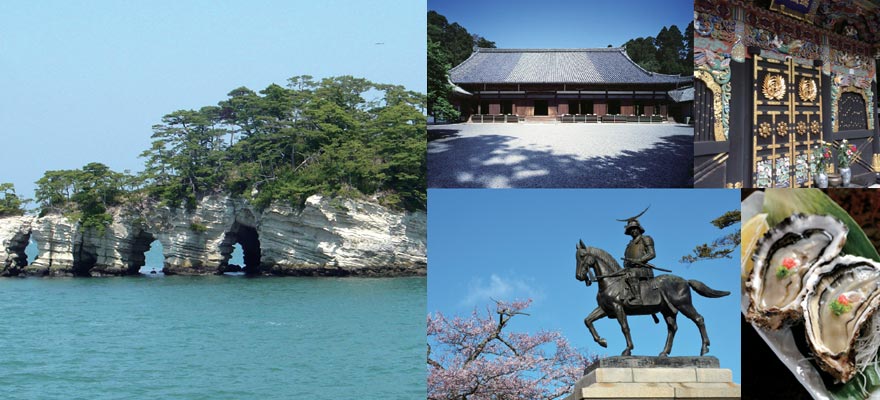Home > Highlighting JAPAN >Highlighting Japan March 2014> 47 Prefectures from A to Y
Highlighting JAPAN
47 Prefectures from A to Y
Miyagi
Exploring the surrounds of Sendai

T he city of Sendai is one million strong, stretching from the Pacific Ocean to the Ōu mountain range. This gives the capital of Miyagi Prefecture unique geographical diversity. Depending on the direction you choose, an hour's drive from the compact city center can place you in hills, mountains, plains or at the ocean.
To enjoy the best of the abundant nature this region has to offer, many visitors make a trip from Sendai to nearby Matsushima. A 40-minute train ride on the Senseki Line will take you to Matsushimakaigan Station, where you can see the place where famed haiku poet Basho Matsuo was at a loss to describe the beauty before him. Matsushima literally means 'pine island,' and you can find some 260 large and small pine-covered islands dotting the bay. The best way to experience the breathtaking scenery is by an hour-long sightseeing cruise.
The town of Matsushima also features several museums, hotels and historic buildings. Most of the historical structures are connected with Masamune Date, the legendary one-eyed samurai and feudal lord who founded the modern city of Sendai around 1601. Not far from the pier, a narrow red footbridge with missing planks will lead you to Godaido Temple. This small temple was originally built in 807, but it was reconstructed by Date in 1604. Its lofty location overlooking the bay is matched by its mysterious interior, which houses five sacred statues that are shown only once every 33 years, most recently in 2006.
Less than half a kilometer northwest of Godaido is Zuiganji, one of the most famous temples in the Tohoku region. The temple was first built in the ninth century but fell into ruin before being reconstructed by Date in 1609. "The trees along the path to Zuiganji are 400 years old and were planted by order of Masamune Date," explains Matsushima Tourism Association head Kyuichiro Sato, adding that some of the other trees in the complex date back as much as 500 years. Home to many national treasures and important cultural properties, Zuiganji's main gate and hall are currently under renovation until early 2016. However, a temple kitchen and Date's wife's tomb, which are usually closed, are open during the repairs, while a museum on the grounds highlights more historical artifacts. Check out the caves to the right on the approach to Zuiganji, where priests from across Japan once came to live and pray.
If you're looking for more historical sites related to Masamune Date, you can also visit Zuihoden in Sendai, the final resting place of the great leader and many of his clan.
Once you've had your fill of nature and history, the local food is certainly worth a try. You can enjoy various local delicacies local delicacies ranging from zunda mochi (soft rice cake covered in green soybean paste) to grilled cow tongue, or gyutan. Sato adds that Matsushima's oysters are very popular when they're in season from October to March. "Many people enjoy a tabehoudai, or all-you-can-eat oyster buffet," he says.
Offering relaxation and peace of mind, Sendai and Miyagi Prefecture have effectively recovered from the devastating earthquake and tsunami that struck the area on March 11, 2011. From history to nature, there's something for everyone. So come rediscover Japan with Miyagi's charm.
© 2009 Cabinet Office, Government of Japan






